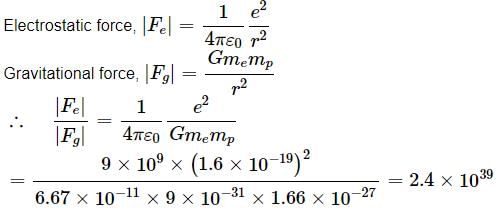Test: Coulomb's Law (NCERT) - CUET MCQ
10 Questions MCQ Test - Test: Coulomb's Law (NCERT)
Which of the following statement is not a similarity between electrostatic and gravitational forces?
The force between two small charged spheres having charges of 1 x 10-7 C and 2 x 10-7 C placed 20 cm apart in air is
The nucleus of helium atom contains two proton that are separated by distance 3.0 x 10-15 m. The magnitude of the electrostatic force that each proton exerts on the other is
Two insulated charged metallic spheres P and Q have their centres separated by a distance of 60 cm. The radii of P and Q are negligible compared to the distance of separation. The mutual force of electrostatic repulsion if the charge on each is 3.2 x 10-7 C is
Two point charges of +3 μC and +4 μC repel each other with a force of 10 N. If each is given an additional charge of -6 μC, the new force is
The ratio of magnitude of electrostatic force and gravitational force for an electron and proton is
The electrostatic attracting force on a small sphere of charge 0.2μC due to another small sphere of charge -0.4μC in air is 0.4N. The distance between the two spheres is
Under the action of a given coulombic force the acceleration of an electron is 2.5 x 1022 ms-2. Then the magnitude of the acceleration of a proton under the action of same force is nearly









 where mc and mp are masses of electron and proton respectively
where mc and mp are masses of electron and proton respectively
















